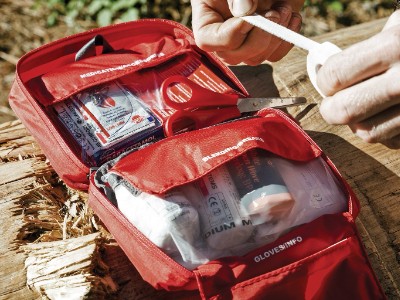Thursday 18th July 2024, 9:00am
Adapted from an article in Scottish Mountaineer Magazine, Issue 101, Summer 2024

Walking in the mountains of Scotland is a fantastic way to stay fit and healthy, both in body and mind. However, venturing into the mountains also comes with inherent risks. Whether you are a seasoned mountain goat or a hiking newbie, having an appropriate first aid kit is important.
While it isn’t possible to take something for every eventuality, and you won’t be able to fix a broken ankle well enough to enable walk off the hill, the following items are recommended:
Other useful items to add to your kit include:
Even a blister on the heal can be debilitating, but with the right items in your first aid kit and a bit of knowledge, many issues can be treated enough to get you off the hill. Regularly review and check the contents to make sure they are in-date and replenished. Consider adding specific treatments for different activities - for burns if you go camping a lot, for instance.
Upskill on a First Aid Course
Going on a first aid course is a really good way of making sure you have the skills, knowledge and confidence to be able to deal with most general first aid issues. There are a wide range of courses, but doing an outdoor specific one would be the most useful. One of the many benefits of Mountaineering Scotland membership is access to some great discounted first aid courses – check our website for more details.
What about the big problems?
Broken ankles; dislocated kneecaps; big bleeds; serious head injuries. All these, I would argue, are showstoppers for being able to get yourself off the hill because there’s a good chance that you could do more harm than good. Use what you have to slow or stop the problem, then make yourself as comfortable as possible and call for Mountain Rescue.
Call 999 – Ask for Police, then ask for Mountain Rescue
Tell them:
A group shelter and extra layers of warm clothes will make the wait for help much more comfortable…but only if you remember to pack them in in your rucksack!